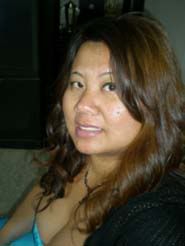Hmong: Heritage Month Starts This Weekend In Marathon County
Thursday, March 31, 2011
Thirty-five years ago this month, the first Hmong family arrived in Marathon County. In the following years, hundreds of other families followed and settled into the community.
Now, there are more than 5,000 Hmong who call this area home. Every year in April, they make it a point to celebrate their journey and life in America.
A small group of people have been working hard for months to coordinate several events that revolved around this year's Hmong Heritage Month theme, "Spring Into Health."
Here are the following programs planned throughout April:
* Kickoff -- 3:00 - 4:30 p.m. on Saturday, April 2 at the Marathon County Public Library Wausau Headquarters. Program includes guest speakers, cultural performances and trivia. Free and Open to public. Contact Vong Lao at (715) 701-0822.
* Healthy Hmong Cooking Demonstration -- Session 1 from 9 a.m. - 12 p.m. and Session 2 from 1 p.m. - 4 p.m. on Saturday, April 9 at Boys and Girls Club in Wausau. Registration required. Contact WAHMA at (715) 842-8390.
* Storybook Hour with Miss Hmong Wausau Blia Lee -- 10:30 a.m. on Saturday, April 16 at Marthon County Public Library. Free and Open to Public. Contact Sharyn Heili at (715) 261-7200.
* Reflecting on the Past, Targeting for the Future-Hmong Health -- 8:30 a.m. - 12 p.m. on Saturday, April 16 at Horace Mann Middle School. Registration required. Contact Zoua Yang at (715) 701-0822.
* Luncheon -- 11:30 a.m. - 1:30 p.m. on Friday, April 29. Program includes networking, cultural performance and lecture by author Paul Hillmer, "A People's History of the Hmong." Contact WAHMA at (715) 842-8390.
* Family Fitness Day and Springing to Health: Resources for Better Living -- 9 a.m - 4 p.m. on Saturday, April 30 at John Muir Middle School. Program includes fun family team-building exercises and games and a health resource fair. Contact Bao Vang at (715) 370-7812 or Peg Allen at pegallen67@gmail.com
The committee is also awarding prizes to active participants throughout the month with an event tracker. It tracks each event you attend and for those who attend most to all programs will be entered into a drawing for big prizes. More information will be available at the Kickoff event Saturday, April 2 at Marathon County Public Library. The drawing for prizes will be held on Saturday, April 30 at John Muir Middle School.
Source


